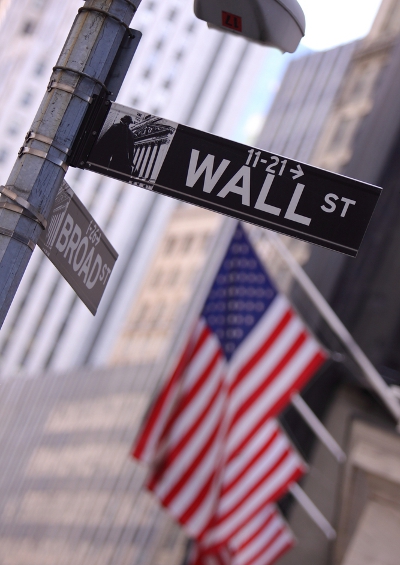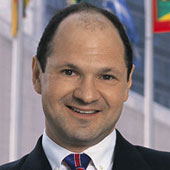The Other Twin Towers: Trump and Wall Street
Donald Trump and Wall Street are both at big-time bubble stage. When they come crashing down, that could deal a severe blow to the entire world.
September 26, 2017

President Trump’s first 9/11 anniversary as president has come and gone without incident. It was, however, a reminder of how things changed dramatically for the country back in 2001 in the blink of an eye.
Under Trump, any comparable catalyst is less likely to be an external attack than the collapse of two domestic houses of cards: The Trump presidency itself and the Wall Street bubble.
Donald Trump and Wall Street with its long rally have a lot in common. For all the glitz, both have been erratic in the past – taking their investors for a ride and losing them a lot money.
Two dupesters
Both Trump and Wall Street have risen on a wave of unearned cash. Pre-presidential Trump parlayed his inheritance from his Daddy into taking a long stream of his investment partners for a ride. As president, he is doing the same to supporters.
The Dow, for its part, has been on a spectacular run – but that is not the result of any spectacular corporate performances. Rather, it is the logical result of the massive injection of liquidity supplied by the U.S. Federal Reserve.
NYC-style symbiosis
After Trump’s election, both have entered a symbiotic relationship. Not surprisingly, Trump has been touting records set by the Dow Jones Industrial Average as proof of the great success of his presidency.
In part, stock prices have continued setting records on expectations of pro-business policies by the Trump Administration, including the administration’s great eagerness to slash regulations and cut the corporate tax rate.
To be sure, though, the U.S. stock market had already been on a run pre-Trump. It has been rising steadily since 2009, creating the second-longest bull market in history.
Since about 2014, analysts and economists (including me) have been warning that stocks are overvalued and that the market is in a bubble stage. As in most bubble cycles, the timing of the end is uncertain, but the ending is certain.
Most recently, a warning came from Yale economist Robert Shiller, a Nobel laureate who correctly called both the dot-com bubble in 2000 and the housing crack-up in 2008.
No Phoenix
Trump, for his part, also had to contend since day one of his presidential campaign with the suggestion that his political rise was a fluke that represented a weird bubble that would soon correct itself – by him crashing and burning.
And yet, the entire world is still waiting for their respective crashes. Instead, both Trump and Wall Street are forging ahead.
Trump has claimed that his base would stick by him even if he were to shoot someone on Fifth Avenue in broad daylight — and so far he has been very much on target. He hasn’t shot anyone, but he has done plenty of other things that would have sunk a conventional politician.
As to the stock market, it too seems unsinkable. It has sagged so many times during the current bull market only to push up to a fresh record that investors now consider any retreat a buying opportunity.
Two forms of disingenuousness
Of course, both Trump and Wall Street are disingenuous in their respective claims.
Trump boasts of creating, preserving or bringing back solid manufacturing jobs. In reality, he is slashing social services and egging on the U.S. Congress to deprive ordinary Americans of their health insurance.
His actual policies and promised tax cuts are structured so as to benefit the very wealthy. The mirage is comparable to his brand-oriented business career that created little, in tangible terms, but stuck others with the bill, while still taking credit for whatever people around him salvaged.
The U.S. stock market has a similar populist undertow. That line goes like this: Even if you don’t own any stocks outright – less than half of Americans do – almost everyone else is a stock market investor via pension funds or 401ks. (In fact, a third of Americans do not at all).
This exaggerated contention itself also obscures the fact that more than 90% of all shares are owned by just 20% of the population. But it nevertheless remains part of the quintessential American narrative of everyone being on the verge of riches.
To perfect the seemingly virtuous circle of popular ownership of the stock market, it is said that financial markets are the ones to fund businesses, which create jobs, boost incomes, spearhead technological progress and increase overall prosperity.
It is an attractive story, but in reality Wall Street is mostly eager to serve the needs of the very rich (which are the ones to pay these intermediaries handsome fees). The rest of society is pretty much squeezed like a lemon.
The Trump tower of Babel
Bubbles that defy logic can’t go on forever. Eventually, they turn into pyramid schemes and collapse under their own weight. The problem is that if a pyramid scheme is not closed down in time and is allowed to spread, it can get so big as to drag down the entire economy.
Trump and Wall Street have now become just such bloated bubbles. They will eventually burst — possibly at the same time, one reinforcing the other. If that happens, their collapse will alter the United States in a major way and, quite possibly, deal a severe blow to the entire world.
Takeaways
Trump and Wall Street have a lot in common. Both have taken their investors for a ride.
Since about 2014, economists have warned that stocks are overvalued and that the market is in a bubble stage.
Trump claimed his base would stick by him even if he shot someone on Fifth Avenue – so far he has been on target.
Trump boasts of creating or preserving solid manufacturing jobs. In reality, he is slashing social services.
Wall Street is mostly eager to serve the needs of the rich. The rest of society is squeezed like a lemon.
